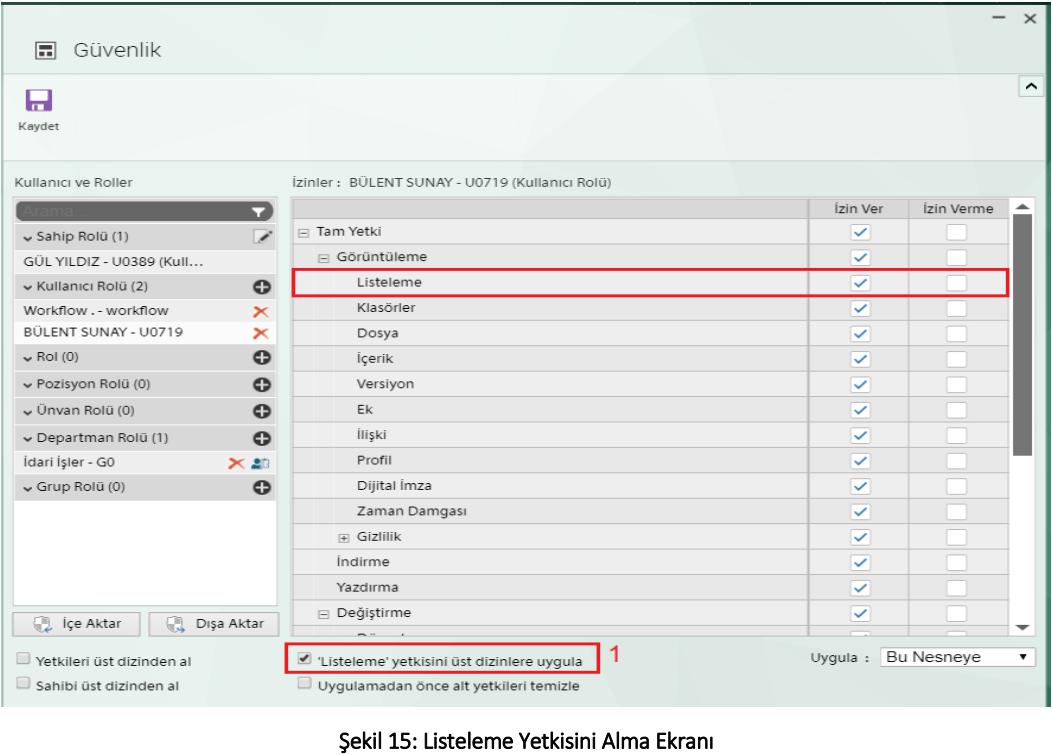eBA Document Management:Authorization Document
INTRODUCTION
eBA Document Management: In the authorization document; eBA Document Management library, directory and User, department, position, title, group roles for documents and authorization based on these roles describes how the operations are carried out.
1.eBA Authorization Procedures in Document Management
eBA Document Management Security window on which libraries, directories and documents are related it can be determined what powers the users will have. After the role definition for this is made, this role is Determines which of its viewing, downloading, printing, modifying, and deleting privileges are allowed.
1.1 Specifying Users and Roles
The authorization process primarily determines the users and roles. Owner role, user role, and Describes how to define a business unit role. Do the same for other roles you can apply it. After selecting the relevant library, directory or document, click Security in the number 2 field in Figure 1.
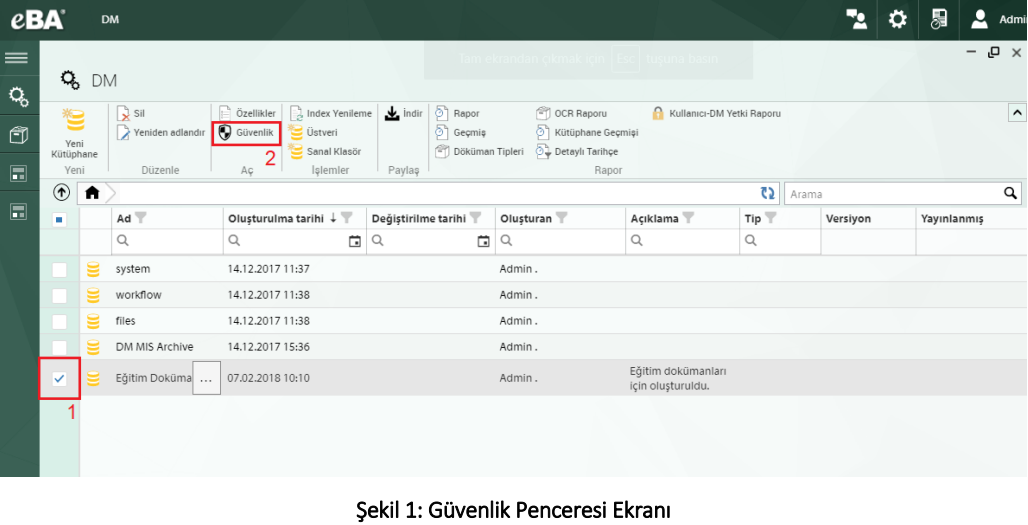
1.1.1 Specifying the Owner Role
Roles and authorizations will be defined in the security window. To determine the user who owns the selected database In Figure 2, the Editing icon next to the Owner Role category is clicked. ID after selecting from user, position, title, department, or group roles from the Type field The ID of the selected type is selected in the field. In the window opened by clicking the button in the field number 3, the selection Once done, click the Save button.
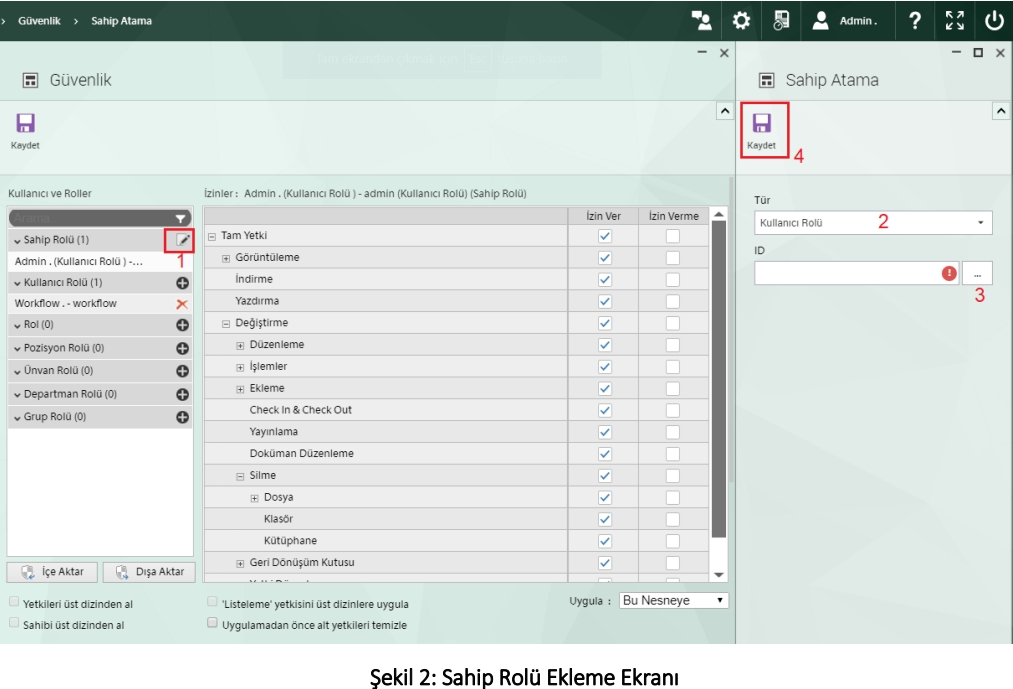
In Figure 3, the users listed in the window that opens are selected. Save button to complete the process is clicked.

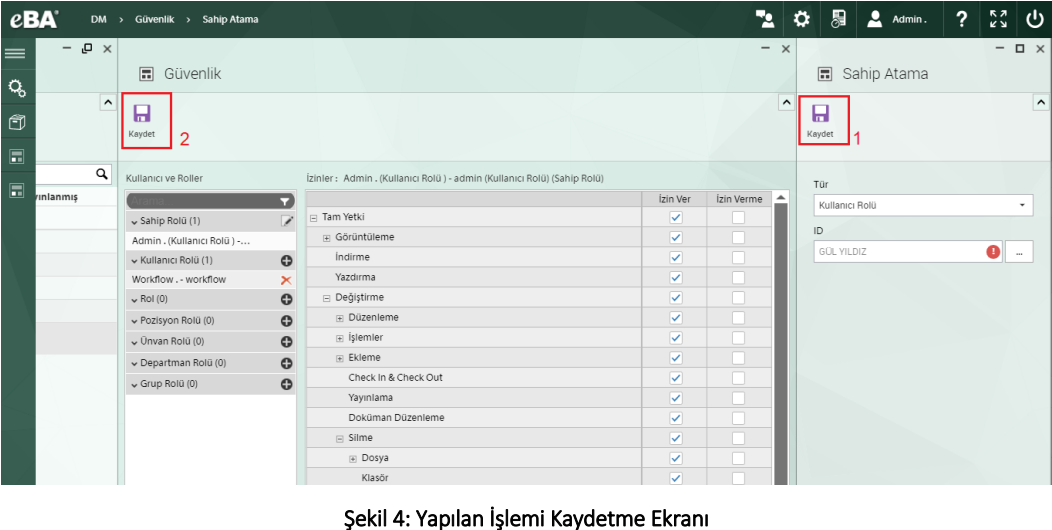
1.1.2 Setting a User Role
To define a user-based role, the user is added under the User Role category. In Figure 5, the corresponding category The Add icon next to it is clicked. After selecting the type and user code in the authorization window that opens, click Save button is clicked.
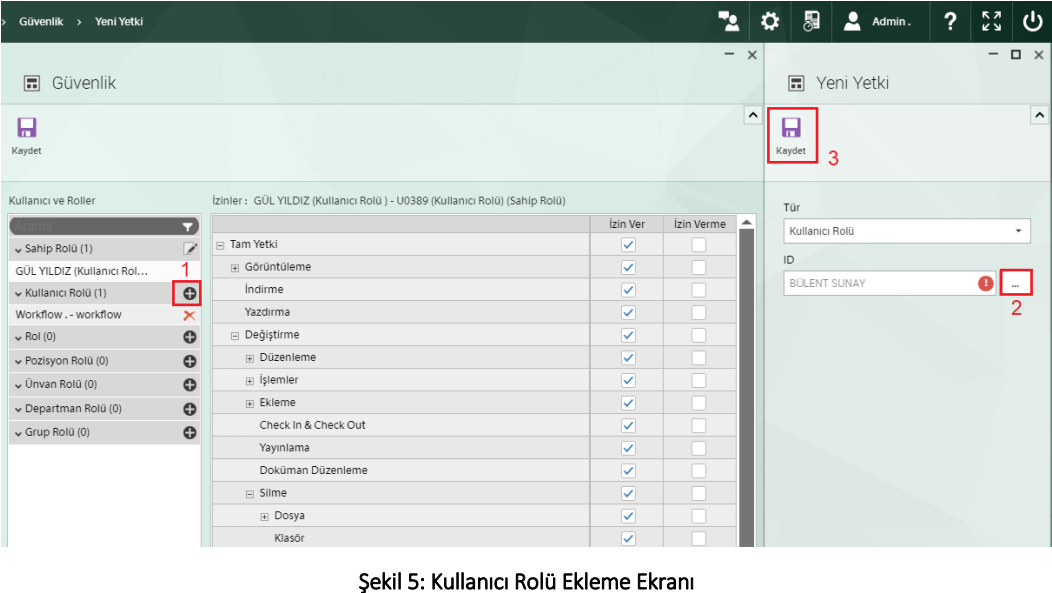
1.1.3 Determining a Department Role
The Business Department Role category is used to define roles for people in a specific business unit. This does not involve the process of identifying users individually. In Figure 6, the Add icon next to the Department Role category is clicked. Tap the button in field number 2 After selecting the department, the Save button is clicked.
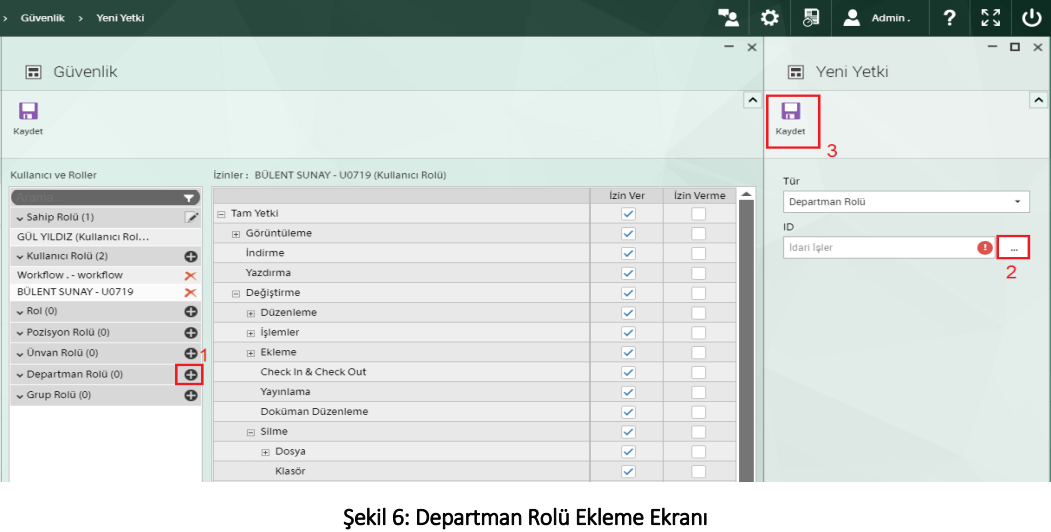
To see the users in the added department, click the icon in field 1 next to that department is clicked. Field 2 lists the users who are connected to the business unit.
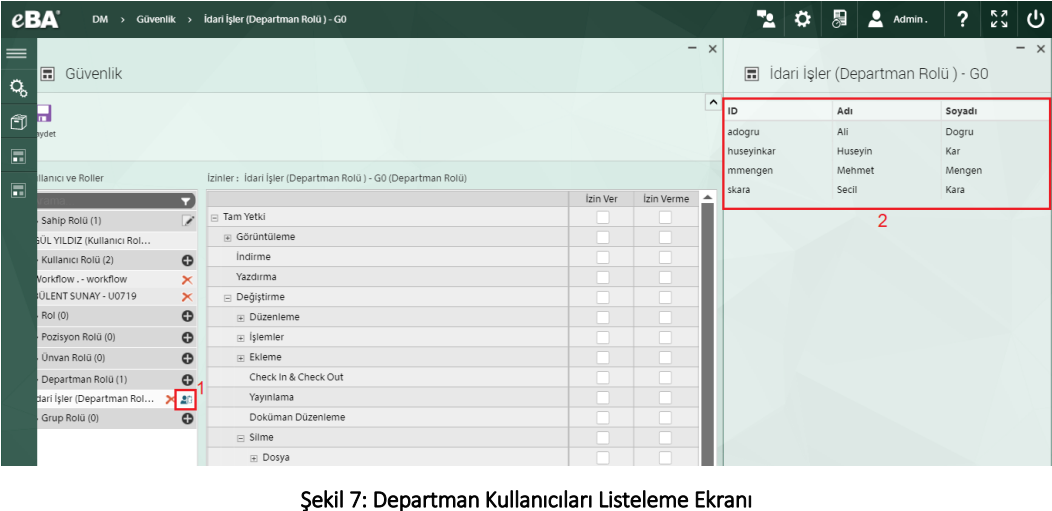
1.2 Role Privileges
How to grant privileges for added users and roles, and what those privileges are, in this section will be explained. The relevant role to be authorized is clicked. On the right, select which permissions to grant for this role. In Figure 8, the department is clicked to authorize the Administrative Affairs department. Located in area 2 Permissions are marked in the permission status. If Full Authority is selected as Allow/Disallow The same status will be selected for all the authorizations under it.
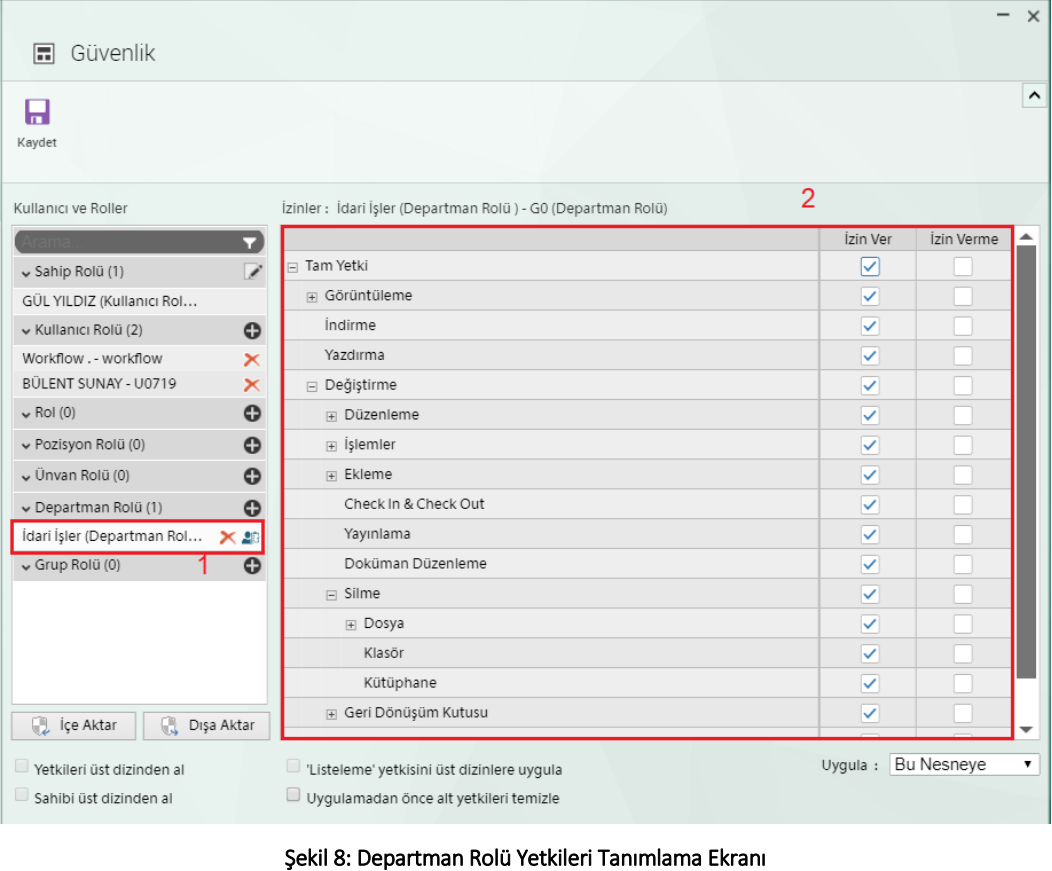
Legend; They are grouped under the main headings of Viewing, Downloading, Printing and Replacing. Own Specifies what action to take for the privileges under it. For example, under Display, click Attachment Authorization determines whether the user has permission to view attachments. What permission status is available for viewing If selected, it will be marked with the same permission status as below it. If the same permission is not to be selected for all of them, one by one The display state is selected. In Figure 9, the Allow and Deny options for the View authorization are checked with a blue box status. This is the case for the authorizations under Display, all of which are selected as Allow and Disallow means it doesn't. If the same status is to be selected for all authorizations, it is sufficient to mark the main heading. This In this case, the box will be marked as a blue tick.
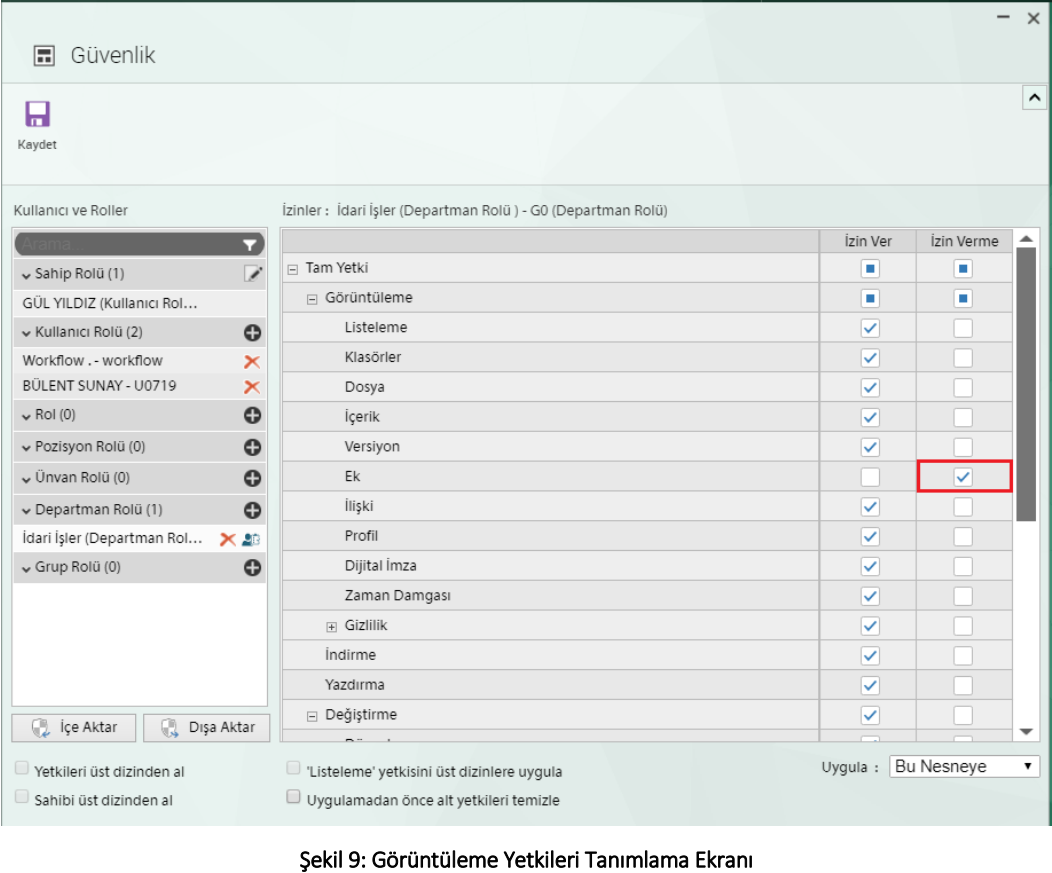
1. Viewing Authorizations;
✓ Listing: The status of the user listing the object for the selected library, directory or document.
✓ Folders: The status of viewing folders belonging to the corresponding object for libraries and directories.
✓ File: The status of viewing documents for the selected object.
✓ Content: The display status of the added content of the documents.
✓ Version: The display status of the versions of the documents.
✓ Attachment: The display status of the attached attachment files of the document.
✓ Relationship: The display status of the related ones added to the document.
✓ Profile: The display status of the added profiles of the document.
✓ Digital Signature: The display status of the digital signatures of the document.
✓ Timestamp: The display status of the added timestamps for the document.
✓ Privacy: From the privacy types defined for directories or documents belonging to the user's selected object is the authority to view what types of privacy. Confidential, Unclassified under the heading of Confidentiality, Service-Specific, Private, Top Secret, Personal powers are chosen.
2. Download Authorization:
Determines whether the user has download privileges on the selected object. For example, the user is only authorized to view and download the relevant document if not, the Download authorization status is marked as Disallow.
3. Printing Authorization:
Whether the user is authorized to print the document.
4. Modification Powers;
✓ Editing: Properties, Description, Renaming, Profile actions of the user is the authority to make arrangements.
✓ Operations: User's; Move, Copy, Reference File, Create Shortcut, Index Refresh, It is the authority to make Share Link and Send as Mail operations.
✓ Check In Ceheck Out: The user's authority to version the document.
✓ Publishing: It is the authorization to publish the document.
✓ Document Editing: It is the authorization of the user to make changes to the document.
✓ Deletion: On the folder and library with content, version, attachment and relationships added to the document is the authorization of the user to perform the deletion process.
✓ Recycle Bin: Authorization for operations under the user's recycle bin status. View, view recycle bin, View All, other view documents deleted by users, Undo & Delete, in the recycle bin is the authorization to perform deletion and retrieval operations on the documents contained in it.
✓ Authorization Editing: It is the status of whether the user has permission for these authorizations
5. Annotation:
Authorization of the user to transactions involving gold for annotations added to the document status. Viewing, viewing annotations, editing, modifying annotations Deletion, Deletion is the authorization to delete the annotations that have been added.
6. Obtain Privileges from the Parent Directory Authority;
This option is selected by default in the Security setting for a new directory or document. If the directory is The library and the document receive the directory authorizations to which it is attached. This option is selected to belong to the selected object Users and roles, and their permission statuses are selected. In Figure 10, the permission status tiles are marked yellow because the Get privileges from parent directory option is selected. This Specifies that the selected state comes from the parent directory. As in Figure 11, when unchecked, the permission boxes are number 2 will be like in the field
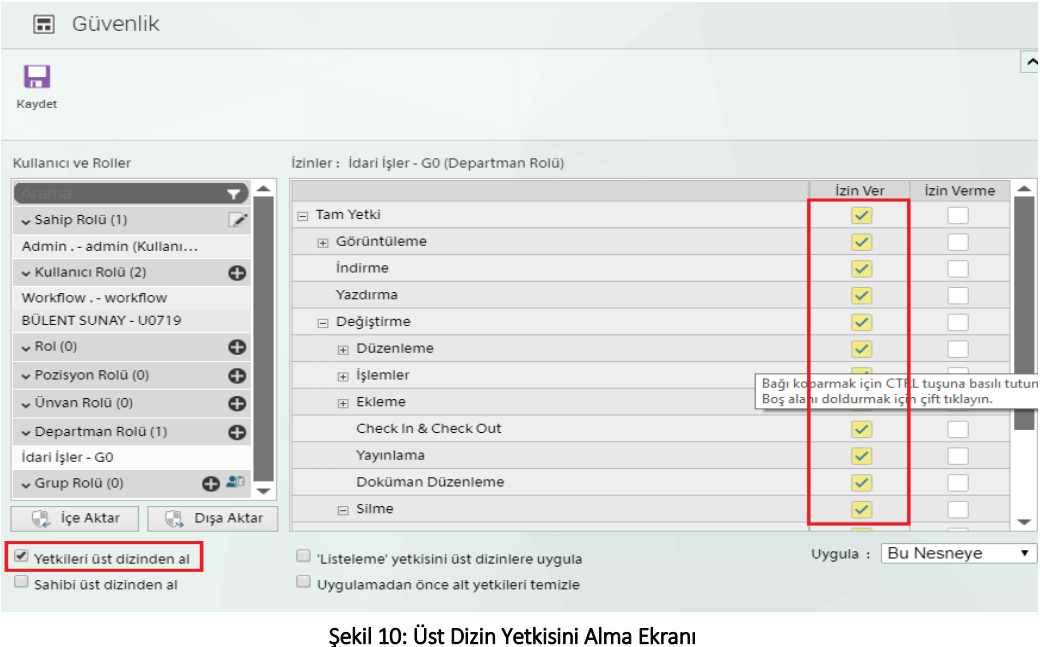
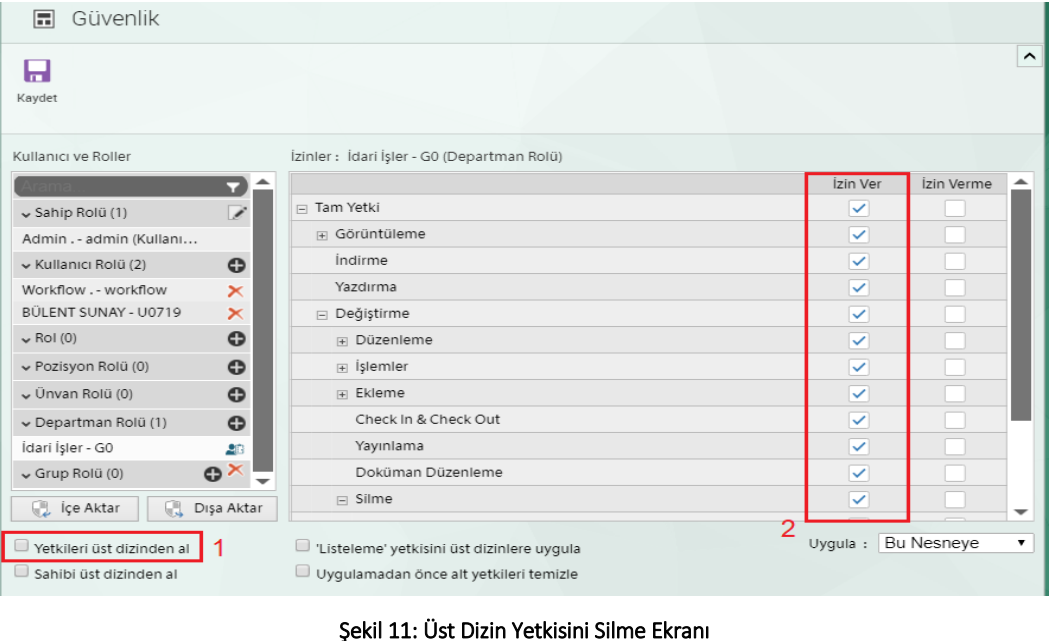
The desired permissions can be granted on the authorizations.
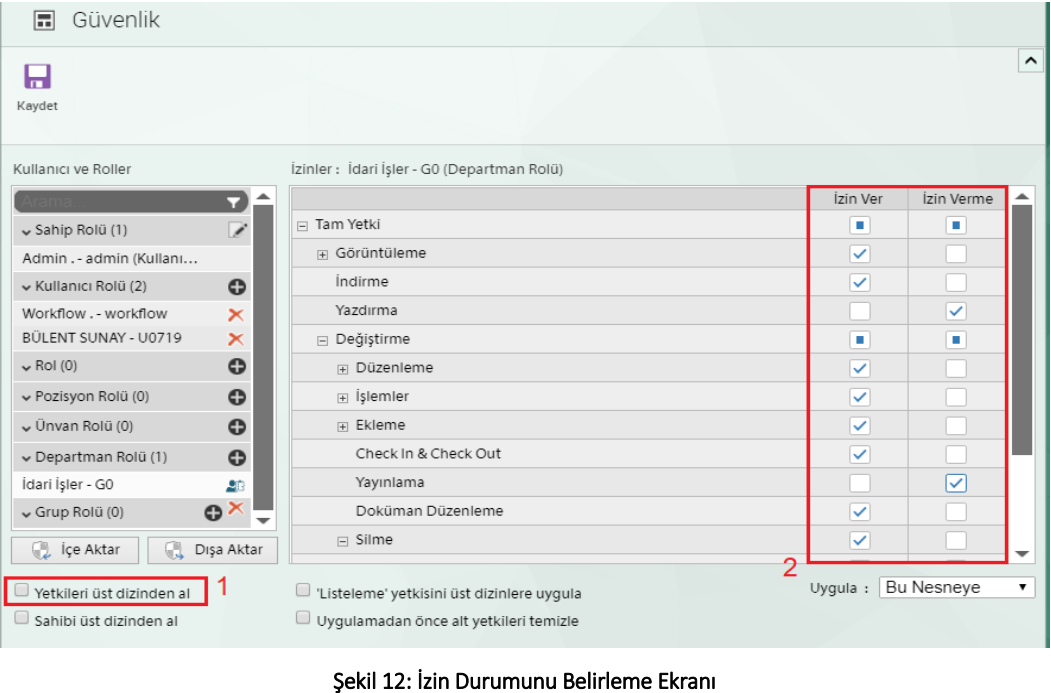
7. Owner Receive Authority from the parent directory;
The user in the owner role defined for the directory to which the selected object is linked is the same person within the related object In Figure 13, the Get owner from parent directory option is checked, and then the Save button is clicked. In Figure 14, when the Security settings of the object are turned on, the user in the owner role is the user of the owner role of the parent directory appears to be.
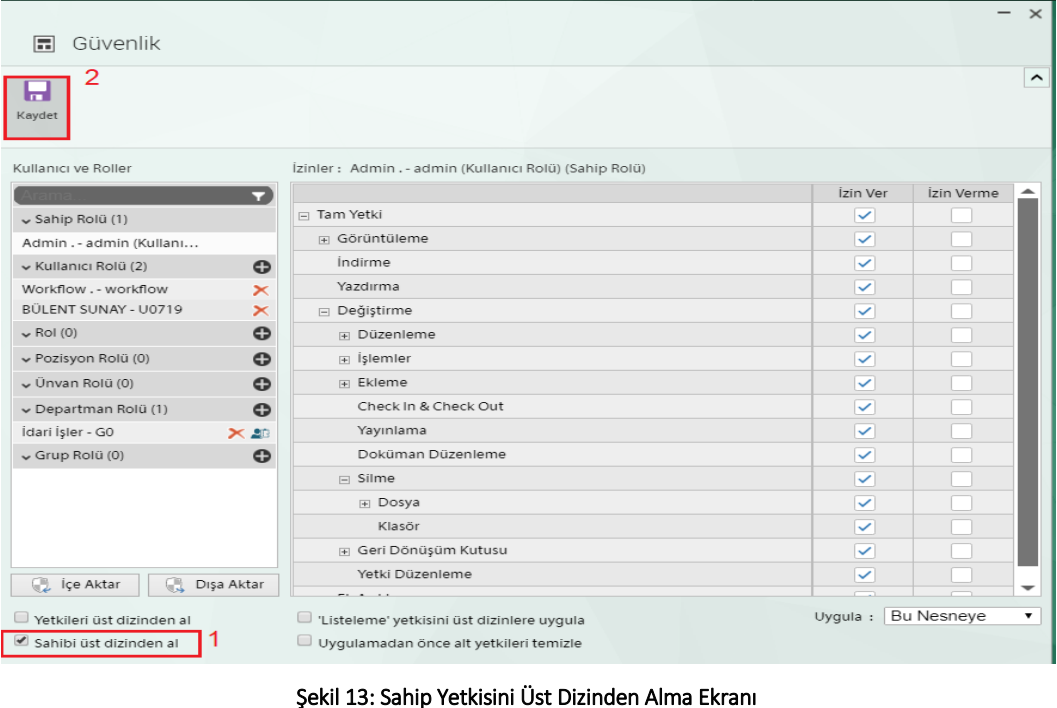
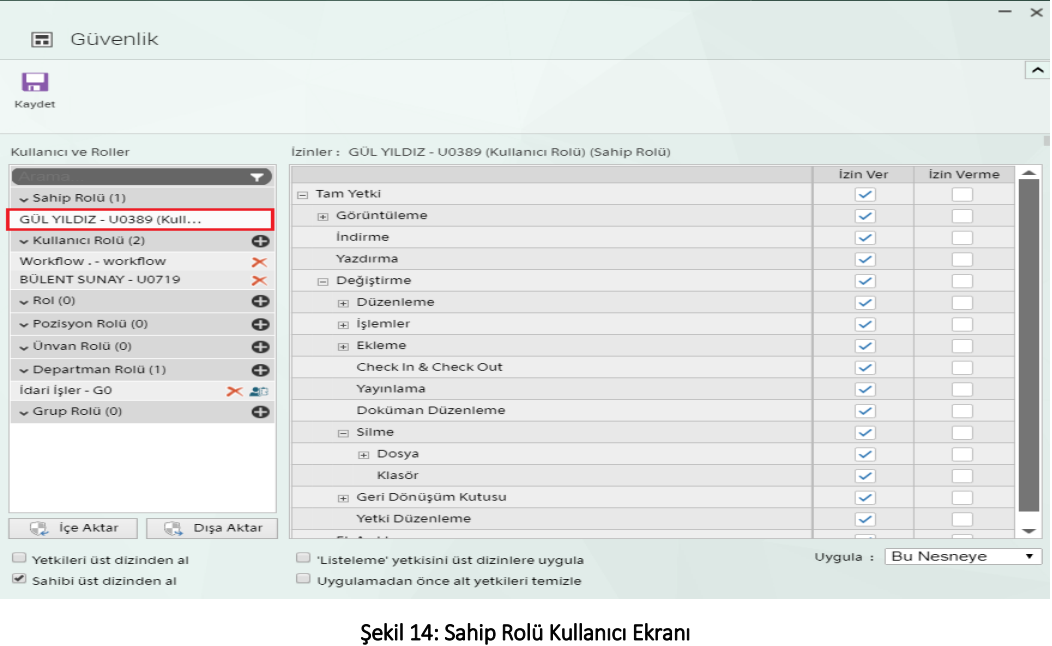
8. the authority to apply the enumeration authority to parent directories;
When granting role-based authorization for a directory or folder, the corresponding object is desired to be displayed to the user, but the parent if there is no View/List privilege for the index In Figure 15, by granting viewing privileges for the parent directory, the the object and its parent directory are visible to the user.
